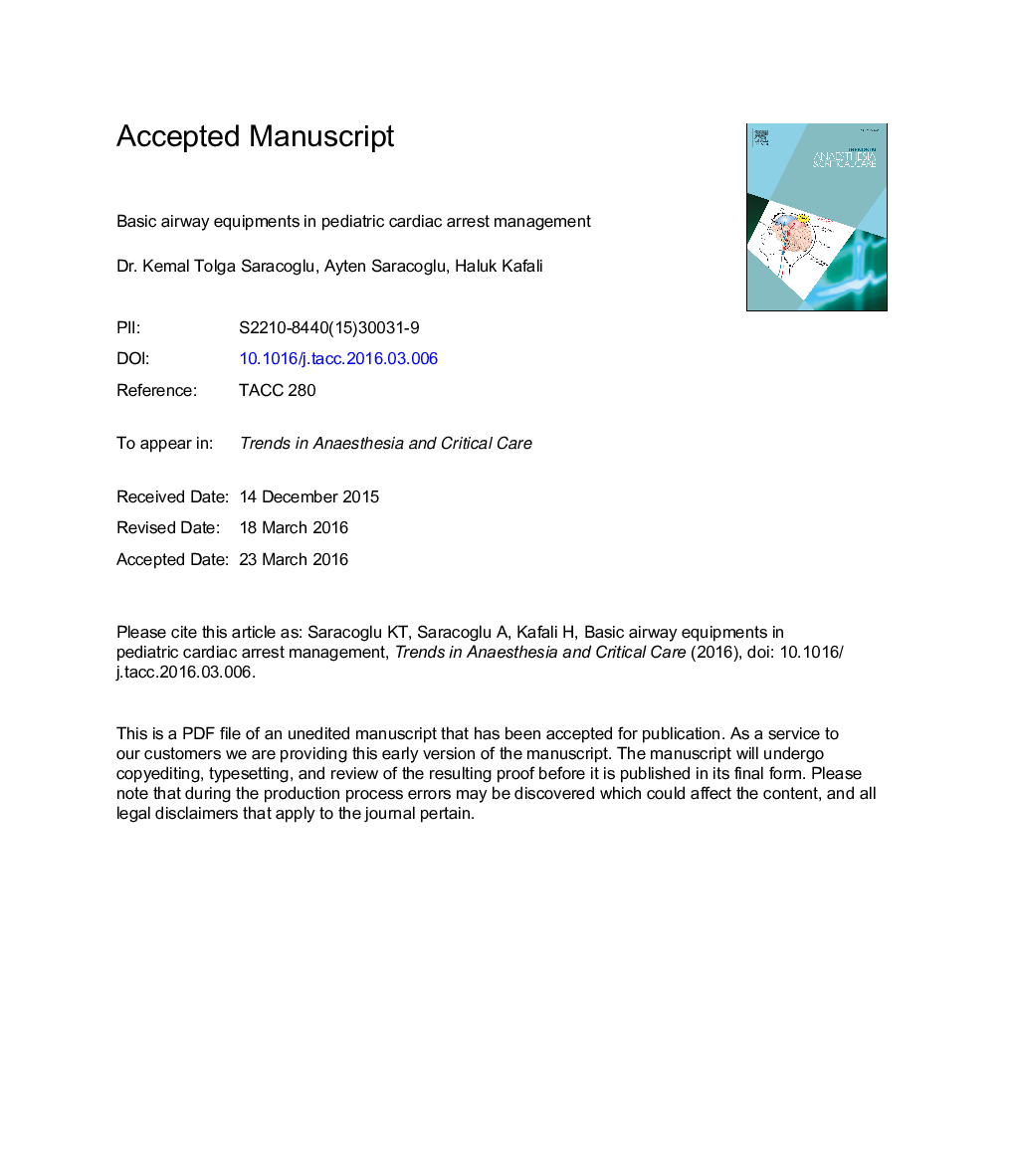| Article ID | Journal | Published Year | Pages | File Type |
|---|---|---|---|---|
| 5584262 | Trends in Anaesthesia and Critical Care | 2016 | 20 Pages |
Abstract
In both in-hospital and out-of-hospital settings, pediatric cardiac arrest cases are common. Performing rescue breathing within a shorter time and achieving safe airway as early as possible during resuscitation is important for reducing interruptions. After a thorough review of the literature we concluded that the number of available randomized clinical studies is not enough to prove the superiority of different airway equipments in pediatric cardiac arrests. It is clear that the steps to be taken in this field will help determine the superior methods and create a tremendous impression. There is no data supporting the routine use of any of these airway equipments. The most appropriate technique depends on the conditions of cardiac arrest and experience of the practitioner. Supraglottic airway equipments, which have been developed for pediatric airway management, seems to be convenient in airway management. However pediatric tracheal intubation requires training and experience, thus presents a high incidence of complications.
Keywords
Related Topics
Health Sciences
Medicine and Dentistry
Anesthesiology and Pain Medicine
Authors
Kemal Tolga Saracoglu, Ayten Saracoglu, Haluk Kafali,
